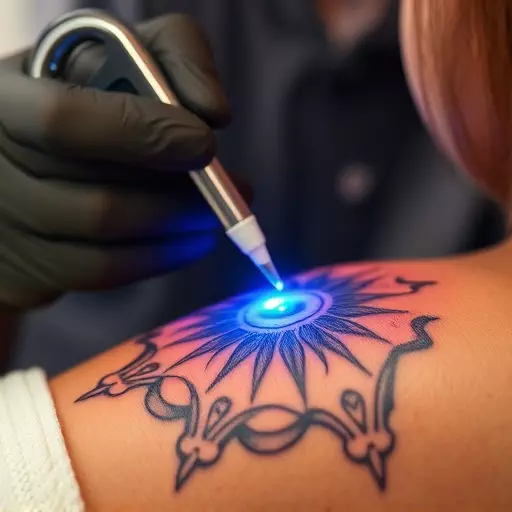Toledo offers diverse tattoo removal options, from laser treatments for larger tattoos to topical creams like Tattoo Removal Toledo's vitamin C-infused formulas for gradual fading. Professional consultation is key to determining the best method, whether it's laser therapy or cream-based approaches like salicylic acid. Tattoo removal training programs are essential for competent and safe services, focusing on laser procedures and surgical excision alongside non-invasive creams effective for smaller tattoos.
Tattoo removal has evolved into a specialized field, offering various methods for effective erasure. In this comprehensive guide, we explore the art of tattoo removal, focusing on training programs that equip professionals with the necessary skills. From traditional laser technology to emerging tattoo removal creams, each approach presents unique advantages and considerations. Discover how these programs in Toledo and beyond are revolutionizing the industry, providing clients with tailored solutions and enhanced results.
- Understanding Tattoo Removal Methods and Their Efficacy
- The Role of Tattoo Removal Training Programs in Skilled Removal
- Exploring Tattoo Removal Cream: Benefits and Limitations
Understanding Tattoo Removal Methods and Their Efficacy

Tattoo removal in Toledo involves a variety of methods, each with its own efficacy and suitability for different skin types and tattoo sizes. Common techniques include laser tattoo removal, surgical excision, and topical creams. Laser tattoo removal is a popular choice due to its ability to target specific pigmented ink particles while minimizing damage to surrounding skin. This method requires multiple sessions and is most effective for larger, darker tattoos.
Tattoo removal creams offer an alternative approach, typically containing ingredients like vitamin C, salicylic acid, or other exfoliants that gradually fade the tattoo over time. While these creams are generally safer and less invasive than laser treatments, they may not be as effective for more intricate or vibrant tattoos. It’s crucial to consult with a professional who can guide you through the best tattoo removal methods based on your specific needs and help manage expectations regarding outcomes.
The Role of Tattoo Removal Training Programs in Skilled Removal

Tattoo removal training programs play a pivotal role in ensuring skilled and safe tattoo eradication. These programs equip individuals with the knowledge and practical skills necessary to navigate the complex landscape of tattoo removal, going beyond mere application of topical creams like tattoo removal Toledo offers. Participants learn about various tattoo removal methods, understanding their mechanisms, benefits, and limitations.
Through hands-on training, future practitioners gain expertise in techniques such as laser tattoo removal, surgical excision, and other cutting-edge procedures. This specialized education fosters confidence and competence, enabling professionals to deliver effective solutions for those seeking to remove unwanted tattoos. It’s not just about a quick fix with a tattoo removal cream; it’s about providing informed, tailored care that respects the client’s journey towards achieving a clear canvas.
Exploring Tattoo Removal Cream: Benefits and Limitations

Tattoo removal cream has emerged as a popular and relatively non-invasive method for those seeking to eliminate unwanted ink. This topical treatment offers several advantages, particularly for individuals who are reluctant to undergo laser procedures or prefer a more straightforward approach. The active ingredients in these creams, such as hyaluronic acid or salicylic acid, work by carefully exfoliating the skin and promoting the natural process of fading tattoos over time.
While tattoo removal cream is an attractive option, especially for smaller or newer tattoos, it has its limitations. Results can vary greatly depending on skin type, the size and color of the tattoo, and individual healing capabilities. Some creams may only fade the ink slightly, and multiple applications are often required, making it a time-consuming process. Additionally, for more intricate or deeper tattoos, this method might not be as effective as other removal techniques, like laser therapy, which specifically targets and breaks down pigment particles.


